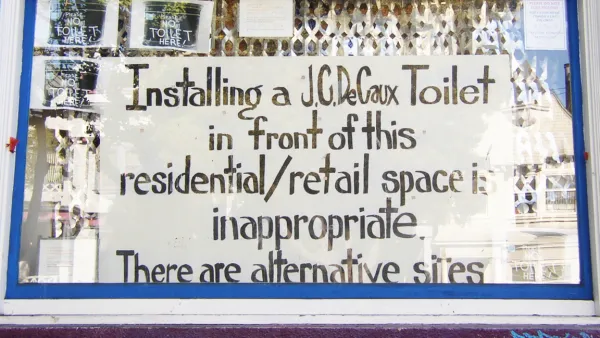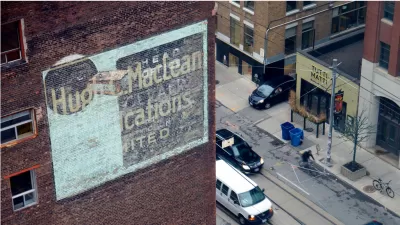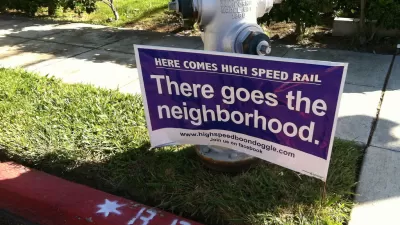NIMBY

The Theory of NIMBYism, Part 2
Homeowners' desire for more expensive land does not justify the "NIMBY veto" over new development.
Houston High Rise Ruling a Win-Lose
A judge's ruling provides a way forward for the proposed Ashby high rise development in Houston—a 21-story residential building that provoked a lawsuit by neighbors who have little recourse to protest developments in their city.
Questioning the 'Wisdom of Crowds' in Minneapolis
In a familiar refrain for anyone who's lamented the veto power of NIMBYs or the added cost of citizen engagement events, one writer expresses concerned about a recent succession of developments shot down by community groups in the Twin Cities.
How (and Where) NIMBY Zoning Regulations Stagnate the National Economy
Household formations and the tight mortgage market are one thing, but a recent article on Vox examines the role of zoning—and the NIMBYs that control it—in the housing market's stagnating influence on the national economy.
Happy Ending for Controversial Development Proposal in Philadelphia
Once a developer provokes the ire of the community surrounding a proposed development and the word NIMBY gets bandied about, chances for a mutually beneficial solution are slim to none. Not so with the One Riverside project in Philadelphia.
Development Fails the Public Opinion Polls
A recent article for PlannersWeb called “10 Things You Should Know About How the Public Feels About Development” provides helpful data and insight into the type of opposition encountered whenever new development projects face public scrutiny.

Website Says 'Yes In My Back Yard'
A website called New York YIMBY is run by a 23-year-old New Yorker named Nikolai Fedak. The site, and Fedak’s pro-development ethos, was recently detailed in the New York Times.

NIMBY Added to the Oxford English Dictionary
The definitive dictionary of the English language, the Oxford English Dictionary, will add the term NIMBY to its latest edition, citing the widespread use and worldwide political relevance of the term as reasons for its inclusion.
Tappan Zee Bridge Bike and Pedestrian Path Sparks Controversy
A recent article calls it likes it sees it: most would consider a three-mile bike and pedestrian path over the Hudson River a gift. Not so in South Nyack, at the western end of a new Tappan Zee Bridge, where such a plan sparked vehement opposition.
Ritzy Neighborhoods Struggling Against Infill
The market forces that push developers and landowners to build “more” and “bigger” have cropped up in some of the swankiest neighborhoods in Portland. So far, neighbors who oppose the projects are finding scant legal recourse to prevent the changes.

The Theory Behind NIMBYism
Why should people have veto power over anything built in their neighborhood?
How States Can Combat Affordable Housing NIMBYs
The U.S. is in the midst of an affordable housing crisis. But as the landmark Mount Laurel saga illustrates, many communities object to developing such housing. Corianne Payton Scally argues that states should work harder to promote such projects.
10 Principles for Smart Growth in Existing Communities
Frustrated by what's passing as "smart growth" and "transit oriented development," Bill Adams postulates ten refinements (or less subtly stated clarifications) of the principles of smart growth and new urbanism.

Leaked Settlement Shows the Dirty Underbelly of NIMBYism
In case anyone thought that developers were the only bad actors seeking to profit off of contentious projects, confidential settlement terms leaked to Curbed show how local groups abuse the California Environmental Quality Act for dubious gains.
The Steps to Creating a Meaningful Vision
In the three steps of placemaking, crafting a meaningful vision is the first and most straightforward, yet it's the most under-leveraged. Continuing his series on "Municipal Placemaking Mistakes," Nathan Norris describes how to get it right.
NIMBY Zoning And the Tragedy Of The Commons
Decades ago, ecologist Garrett Hardin wrote about the "tragedy of the commons"- when an action that is rational for one person becomes irrational when widely practiced. For example, suppose that there are a few dozen cattle ranchers near a pasture open to all. It makes sense for each rancher to let as many cattle graze as possible on the pasture, so that the ranchers can feed their cattle without buying additional land. But if every rancher lets as many cattle as possible graze, sooner or later the land will be overgrazed and the cattle may starve.
Home Bible Study + Zoning Codes = Prison
A Phoenix man serves time for holding prayer gatherings in his home, part of what attorney and author John W. Whitehead sees as a larger trend toward zoning out home services.
Bringing Crowdfunding to Our Backyards
Michael J. Coren shines a light on an innovative crowdfunding site targeting neighborhood improvements.
NIMBYs, For Better or Worse
NIMBYism served a purpose once, says Scott Doyon, preventing all sorts of heinous projects from being built. But eventually, it became about stopping ALL change. Doyon has some recommendations for changing course.
The Problems of the Public Process
NIMBYism is obstructing the urban planning process, according to architect and New Urbanist Andres Duany. He suggests changing the public participation process to unclog the system.
Pagination
Urban Design for Planners 1: Software Tools
This six-course series explores essential urban design concepts using open source software and equips planners with the tools they need to participate fully in the urban design process.
Planning for Universal Design
Learn the tools for implementing Universal Design in planning regulations.
Smith Gee Studio
City of Charlotte
City of Camden Redevelopment Agency
City of Astoria
Transportation Research & Education Center (TREC) at Portland State University
US High Speed Rail Association
City of Camden Redevelopment Agency
Municipality of Princeton (NJ)


































